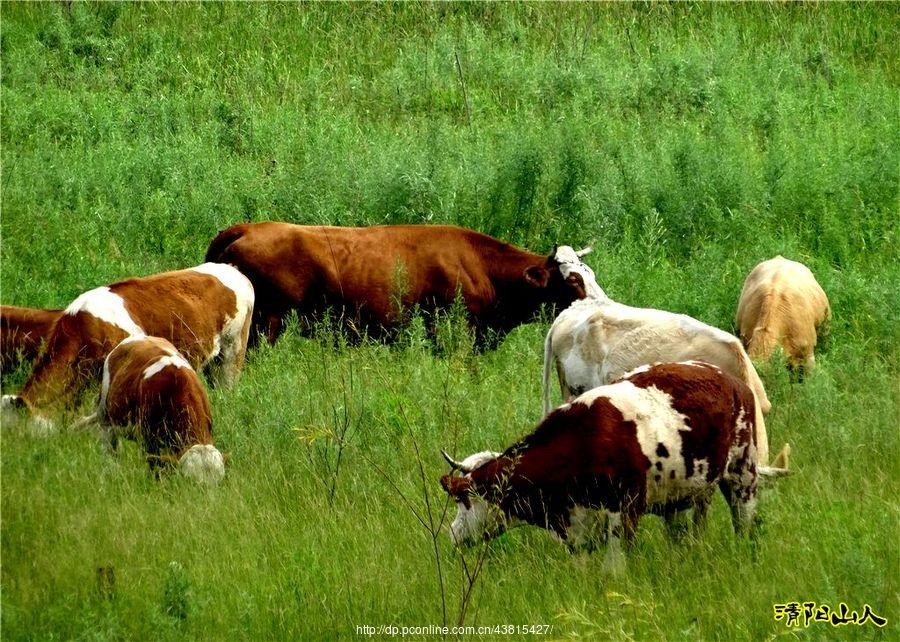

News briefing: Sick cows caused by non-communicable diseases or mechanical trauma should be treated promptly. Dead cows should be promptly designated for harmless treatment. After infectious diseases occur in the cattle farm, sick cows should be isolated in time, and si
...
To do a good job in the prevention and sanitation of cattle farms, the epidemic prevention, quarantine and other veterinary sanitation systems must be strictly implemented. Perform regular disinfection, maintain a clean and hygienic breeding environment, prevent the increase and spread of pathogenic microorganisms, frequently observe the cow's mental state, appetite, feces, etc.; timely prevent and treat diseases, plan immunizations in time, and formulate scientific immunization procedures. Weaned calves and fattening cattle should be dewormed for health care in time, and parasites on the body surface should be killed in time. It is necessary to regularly brush and wipe the cow body to keep the cow body clean. Pay attention to heatstroke prevention in summer and keep warm in winter.
1. Disinfection.
1. The choice of disinfectant. The disinfectant should be a disinfectant that is relatively safe for humans, animals and the environment, has no residual toxicity, does not damage the equipment, and does not produce harmful accumulation in the cattle. The available disinfectants are: hypochlorite, organic chlorine, organic iodine, peroxyacetic acid, quicklime, sodium hydroxide, potassium permanganate, copper sulfate, prostaglandin, alcohol clear and so on. 2. Disinfection method. ①Spray disinfection. Use a certain concentration of hypochlorite, peroxyacetic acid, organic iodine mixture, trigermide, etc. Spray disinfection with a spray device is mainly used for spray disinfection after the cattle house is cleaned, disinfection of the environment with cattle, cattle farm roads and surroundings, and vehicles entering the farm area. ② Infiltration and disinfection. Wash hands, work clothes or rubber boots with a certain concentration of an aqueous solution of a mixture of neogermide and organic iodine. ③Ultraviolet disinfection. Permanent ultraviolet light is irradiated at the entrance of personnel to achieve a sterilization effect. ④Spray for disinfection. Sprinkle quicklime or caustic soda around the barn, entrance, delivery bed and under the cow bed to kill bacteria and viruses. 3. Disinfection system. ① Environmental disinfection. The surrounding environment of the cow house includes the sports field, which is disinfected with 2% caustic soda or sprinkled with quicklime once a week; the surrounding area and the sewage tank, defecation pit and sewer outlet are disinfected with bleaching powder once a month. Set up disinfection tanks at the gate and the entrance of the barn, using 2% caustic soda solution. ② Personnel disinfection. Workers entering the production area should change their clothes and sterilize with ultraviolet light for 3-5 minutes, and should not wear work clothes outside. ③ Sterilize the barn. The cowshed should be thoroughly cleaned, rinsed regularly with a high-pressure water gun, and spray disinfected and fumigated. ④ Disinfection of utensils. Sterilize feeding utensils, feeding troughs and feed carts regularly. Use 0.1% neoceramic or 0.2-0.5% peracetic acid for disinfection. Daily utensils such as veterinary utensils, midwifery utensils, and breeding utensils should be thoroughly disinfected before use And cleaning. ⑤Environmental disinfection with cattle. Regular disinfection of the environment with cattle will help reduce pathogenic microorganisms in the environment. The medicines that can be used to disinfect the environment of the cattle are: 0.1% Promethazine, 0.3% Peroxoacetate, and 0.1% Sodium Hypochlorite to reduce the occurrence of infectious diseases and hoof disease. Environmental disinfection of cattle should avoid contamination of the feed with disinfectants. ⑥ The relevant parts of the cattle, such as the udder, vagina and hindquarters, should be disinfected and wiped before delivery, breeding, injection treatment and any contact operation of beef cattle to ensure the health of the cattle.
2. Immunization and quarantine.
Cattle farms should selectively carry out vaccinations against diseases in accordance with the requirements of the Animal Epidemic Prevention Law of the People's Republic of China and supporting regulations, combined with local actual conditions, and pay attention to selecting appropriate vaccines, immunization procedures, and immunization methods. Foot-and-mouth disease vaccine must be vaccinated at least twice a year.
3. Disease control and eradication.
In the event of an epidemic or suspected epidemic on a cattle farm, the following measures shall be taken in a timely manner in accordance with the Animal Epidemic Prevention Law of the People's Republic of China: The veterinarian on the farm shall make a timely diagnosis and report the epidemic to the local animal husbandry and veterinary management department as soon as possible. If foot-and-mouth disease is diagnosed, the cattle farm should cooperate with the local animal husbandry and veterinary management department to implement strict isolation and culling measures on the cattle; when tuberculosis, brucellosis and other diseases occur, the cattle should be cleared and purified to culminate the positive Cattle. The whole site is thoroughly cleaned and disinfected. The carcasses of dead or eliminated cattle shall be treated in accordance with the "Regulations for the harmless treatment of corpses and products of livestock and poultry diseases" GB16548. )get on.
4. Treatment of sick and dead cattle and products.
Sick cows caused by non-communicable diseases or mechanical trauma should be treated promptly. Dead cows should be promptly designated for harmless treatment. After infectious diseases occur in the cattle farm, sick cows should be isolated in time, and sick cows should be harmless. Treatment should meet the requirements of GB16548.
5. Waste disposal.
Manure storage tanks should be set up in the downwind of the production area in the site area, and manure and other dirt should be managed in an orderly manner. The bedding, dirt and feces in the cowshed and sports grounds should be removed in time every day, and the feces and dirt should be transported to the manure storage tank. Treatment facilities such as cow dung urine, litter and dirt should be set up in the field, and the waste should follow the principles of reduction, harmlessness and resource utilization.